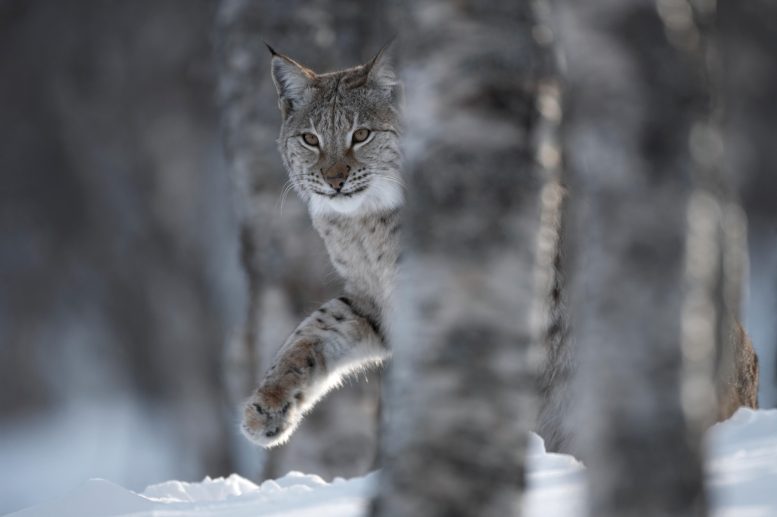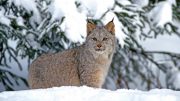
A female European lynx pictured in Norway. Credit: Peter Cairns/Northshots
New research reveals a range of complex opinions surrounding plans to reintroduce the lynx in Scotland. The lynx went extinct in Britain over a thousand years ago, but some conservation organizations argue that the species could play a role in restoring natural ecosystems.
A new study conducted by researchers from the Vincent Wildlife Trust and the University of Exeter explored the perspectives of stakeholders, including farmers, land managers, and conservationists.
“Our results show that views in Scotland about potential future lynx reintroduction are far more diverse, nuanced, and complex than might have been assumed,” said lead author David Bavin, of Vincent Wildlife Trust. “Rather than a simple binary split of ‘for’ and ‘against’, we found a spectrum of different perspectives.”
Five distinct perspectives were identified:
- “Lynx for Change”: supportive of lynx reintroduction, feeling that lynx could facilitate ecosystem restoration.
- “Lynx for Economy”: also supportive, anticipating economic benefits to local communities.
- “No to Lynx”: strongly opposed, perceiving that humans are fulfilling the roles of absent large carnivores.
- “Scotland is not Ready”: supported the conversation but perceived prohibitive socio-ecological barriers.
- “We are not Convinced”: not satisfied that an adequate case for biodiversity gain had been made but were open to further exploration of the potential.
Bavin continued: “The study identified important areas of disagreement over the potential impacts on sheep farming and the degree to which our environment should be managed by people or encouraged to self-regulate. There was a lack of trust between stakeholder groups, which primarily stemmed from some of the participants’ experiences of previous wildlife reintroductions and the management of recovering predators. Encouragingly, however, there was agreement that, for any discussion about lynx reintroduction to move forward, a participatory and cooperative approach is essential.”
Dr. Sarah Crowley, from the University of Exeter, added: “The study provides a foundation for future dialogue between stakeholders over the prospective reintroduction of the lynx to Scotland. The findings also have wider relevance for wildlife reintroductions, species recovery, and conservation conflicts elsewhere.”
The study was carried out in the Cairngorms National Park, based on detailed discussions with 12 people representing a range of groups with an interest in the issue of lynx reintroduction.
A second stage then took place, with 34 new participants taking a survey to give their views on a range of statements about the issue.









Be the first to comment on "Should Scientists Reintroduce the Lynx to Scotland? It’s Complicated"